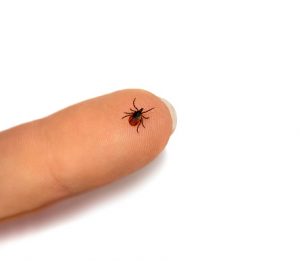 A new bacterium known as Borrelia mayonii has been discovered, which is similar to Borrelia burgdorferi – the Lyme disease-causing bacterium. But how does Borrelia mayonni cause Lyme disease in people? Well, basically, in the same way as B. burgdorferi would.
A new bacterium known as Borrelia mayonii has been discovered, which is similar to Borrelia burgdorferi – the Lyme disease-causing bacterium. But how does Borrelia mayonni cause Lyme disease in people? Well, basically, in the same way as B. burgdorferi would.
Six people have been infected with B. mayonni so far. They were suspected to have Lyme disease, but their tests yielded different results.
Advertisement
There are many similarities between the Lyme disease caused by B.mayonii and B.burgdorferi, including the onset of a fever, headache, rash, and neck pain, then progressing to arthritis-like symptoms in the later stages. The symptoms that set the Lyme disease caused by B. mayonii apart (as detected so far) are presence of nausea, vomiting, diffused rashes, and higher concentrations of bacteria in the blood.
Both B. burgdorferi and B. mayonii are transmitted through deer tick bites, though researchers believe B. mayonii is limited to the ticks in the upper Midwest U.S.
The good news is, the diagnostic testing already used for B.burgdorferi can be used to detect B.mayonii, and the same treatment can be used as well.
Tick bite prevention tips
To lower your risk of Lyme disease from either bacterium, it’s important to limit your exposure to ticks and put forward some effective prevention methods. Here are some prevention tips for lowering your risk of Lyme disease.
- Protect your ankles: Wear long pants tucked into high socks when doing yard work. Wrap duct tape – sticky side out – around where the pants and socks meet so that crawling ticks get stuck on the tape.
- Treat your gear: Treat your clothing, tents, and other gear with repellent, such as permethrin. It kills ticks, mosquitoes, chiggers, and mites. You can find such products online or at sporting goods stores.
- Wear repellent: Apply topical insect repellent that contains less than 40 percent DEET. Children should use repellent that contains no more than 30 percent DEET.
- Conduct tick checks: Tick bites are usually painless, so you may not notice you have been bitten. That’s why, if you are in an area that is a potential tick habitat, thoroughly check yourself for ticks from time to time, and if you spot one, get rid of it immediately.
- Check your pets: Anti-tick treatments and flea collars protect pets from tick bites, thanks to the neurotransmitter blockers. When your pet comes home after being outside, check for any crawling ticks.
- Create a tick-free zone: You can make your yard less attractive to rodents and other tick carriers. Keeping lawns trimmed and creating barriers between your yard and the woods with wood chips, mulch, or gravel can eliminate tall grasses where ticks crawl. Remove wood piles and stones where mice, chipmunks, and squirrels may hide.
- Hike carefully: Stay in the center of hiking trails to avoid contact with vegetation.
Even if you have tried your best to avoid a tick from latching on, it can still happen, so removing the tick as soon as you spot it also lowers your risk of Lyme disease – but there is a right and wrong way to do it.
Advertisement
For starters, don’t try to burn the tick off, as it can cause bacteria to be released, leading to infection. The best way to remove a tick is by using tweezers or thin forceps. If the tick is intact, you can bring it to your doctor for identification.
Early signs of a tick-borne illness include fever and chills, headache, fatigue, muscle aches, and, in some cases, a bull’s eye rash, but these symptoms aren’t universal.
Sources:
http://www.thelancet.com/journals/laninf/article/PIIS1473-3099(15)00464-8/fulltext
